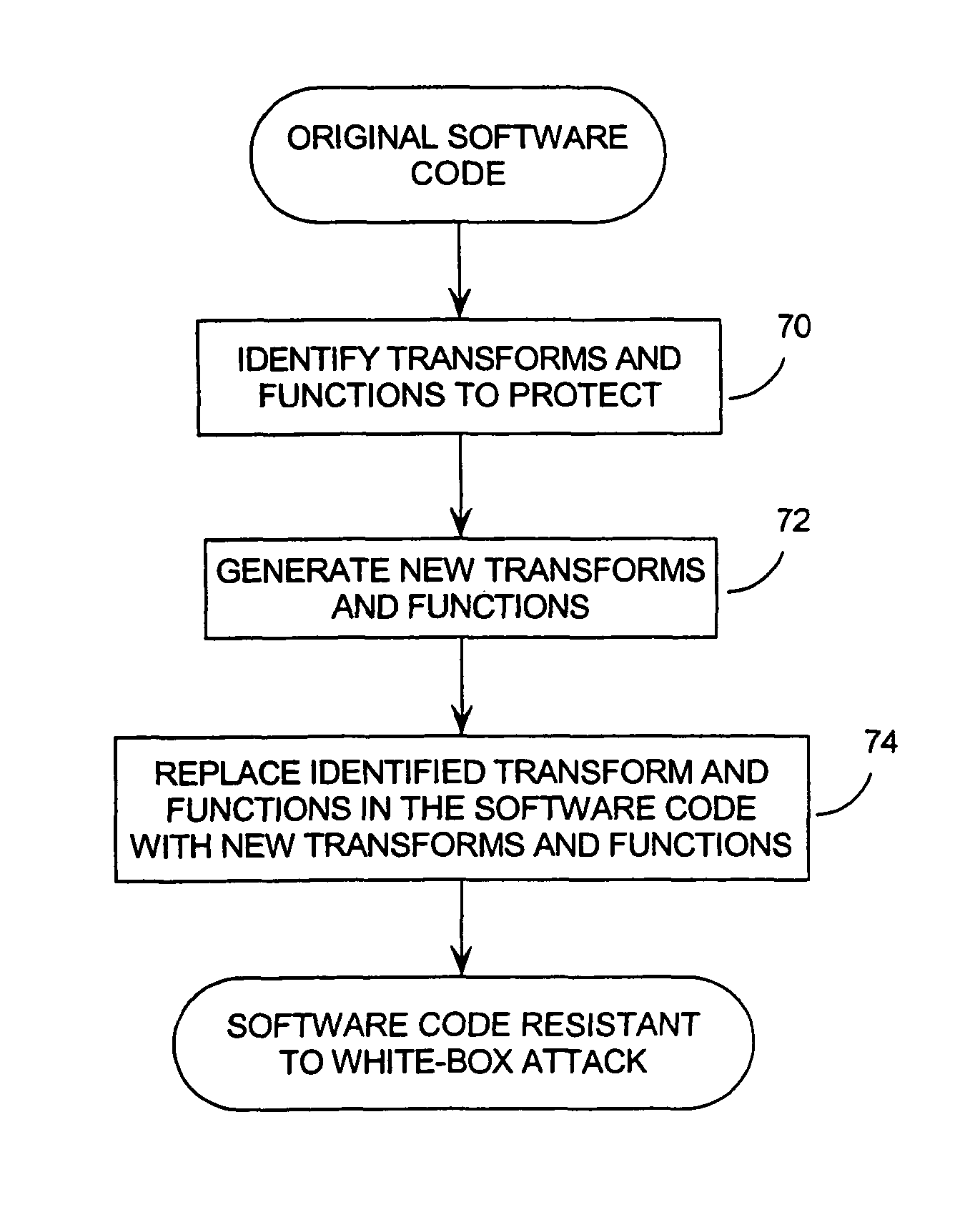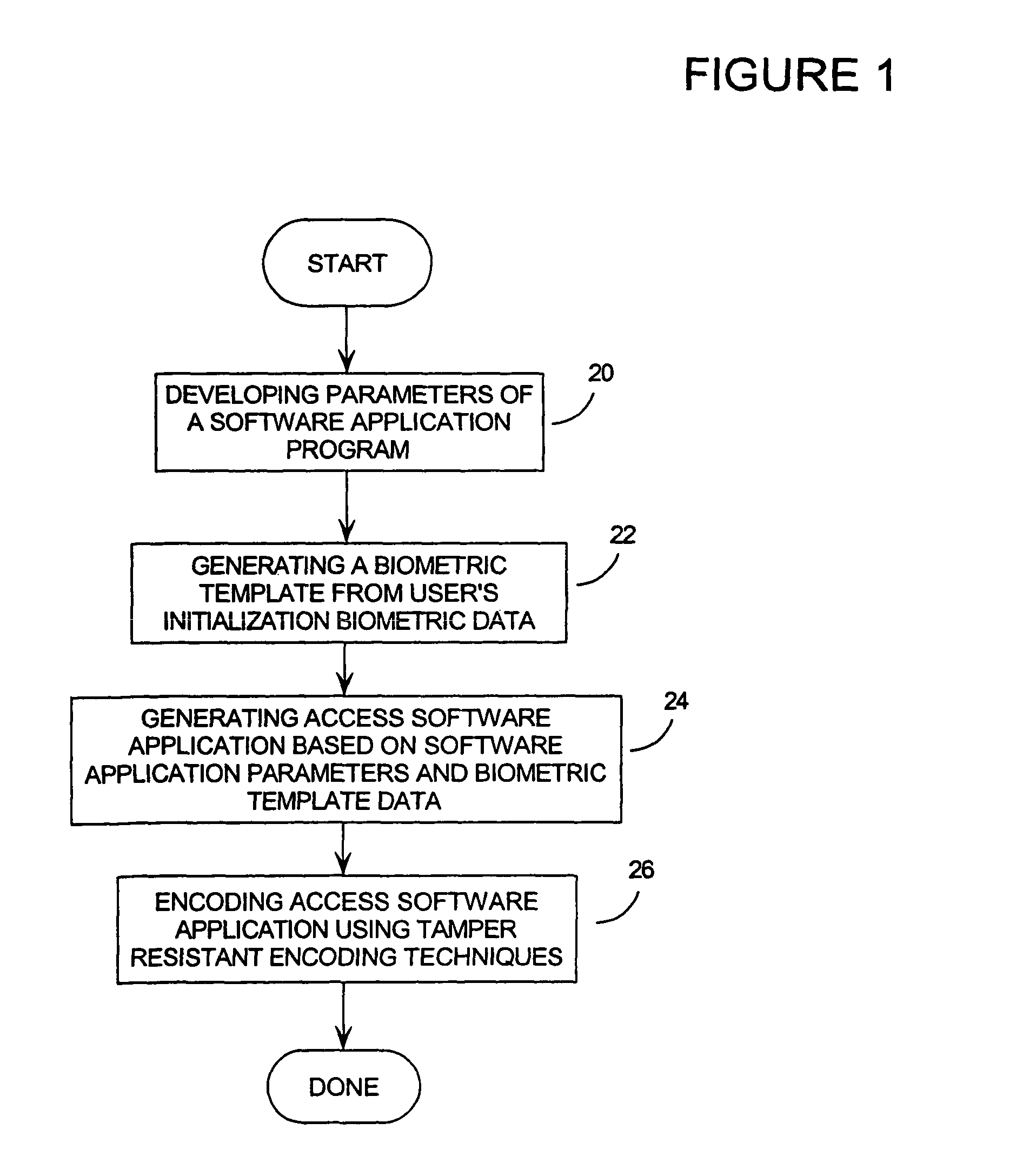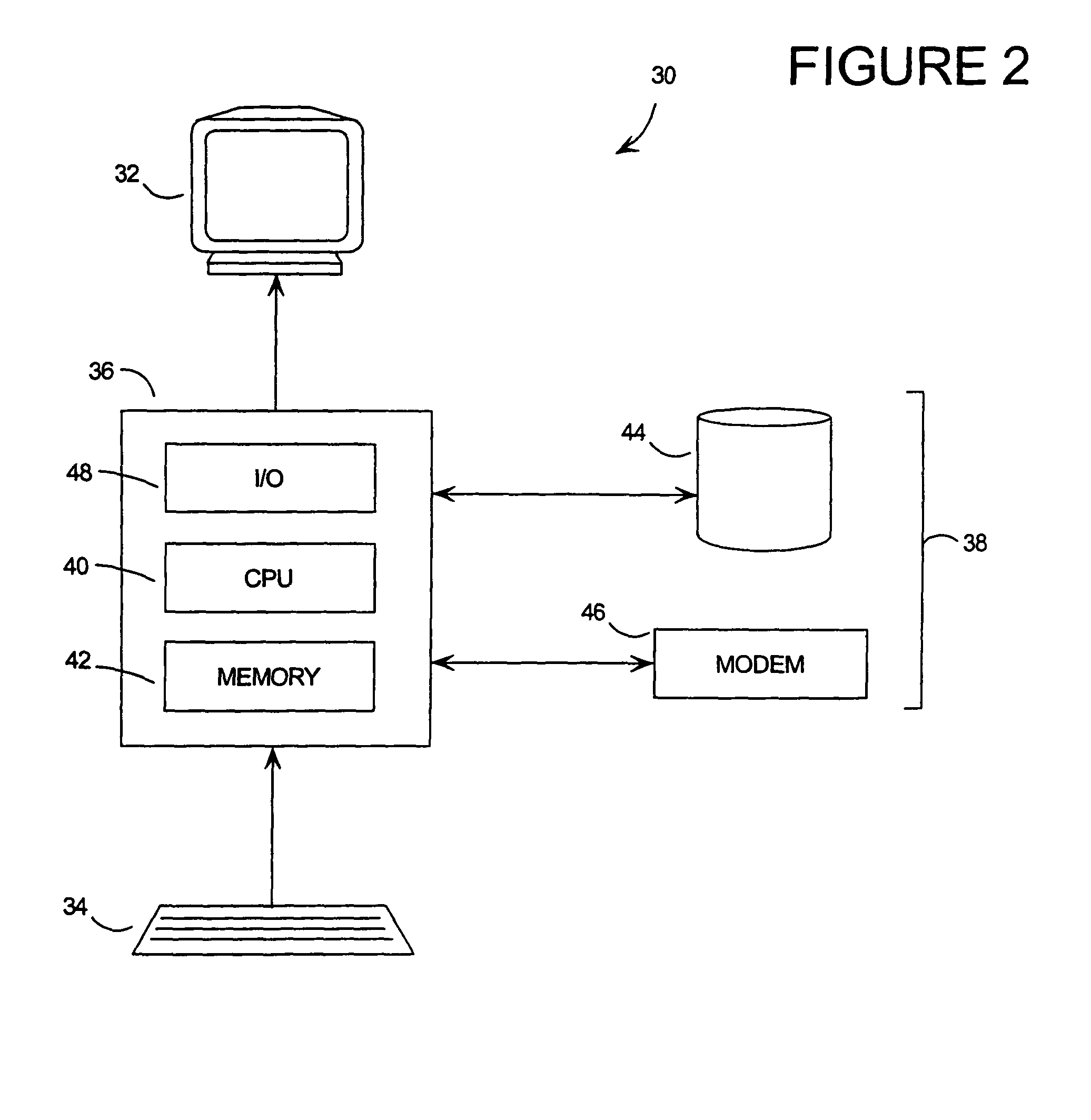Secure method and system for biometric verification
a biometric verification and biometric technology, applied in the field of secure methods and systems for biometric verification, can solve the problems of high entropy of good passwords, information and software that resides on these systems, and users are inundated with passwords
- Summary
- Abstract
- Description
- Claims
- Application Information
AI Technical Summary
Benefits of technology
Problems solved by technology
Method used
Image
Examples
Embodiment Construction
[0051]The biometric verification technique of the invention is implemented in two stages: enrollment, and verification.
[0052]During the enrollment stage, the user establishes an access account which requires him to provide a number of samples of the biometric trait that is being used to confirm his identity. These samples are processed and used to create a biometric template which is stored so it can be used in the verification stage; and.
[0053]During verification, the user enters an access copy of his biometric trait, which is processed and compared to the stored biometric template. If the input data is sufficiently close to that of the stored data, then access is granted; otherwise, access is denied.
[0054]The broad methodology of the invention, which addresses the objects outlined above, is presented as a flow chart of FIG. 1. This figure presents a method for performing biometric verification which proceeds generally as follows.
[0055]First, the parameters of the secure access sof...
PUM
 Login to View More
Login to View More Abstract
Description
Claims
Application Information
 Login to View More
Login to View More - R&D
- Intellectual Property
- Life Sciences
- Materials
- Tech Scout
- Unparalleled Data Quality
- Higher Quality Content
- 60% Fewer Hallucinations
Browse by: Latest US Patents, China's latest patents, Technical Efficacy Thesaurus, Application Domain, Technology Topic, Popular Technical Reports.
© 2025 PatSnap. All rights reserved.Legal|Privacy policy|Modern Slavery Act Transparency Statement|Sitemap|About US| Contact US: help@patsnap.com



